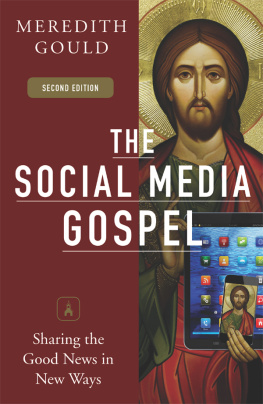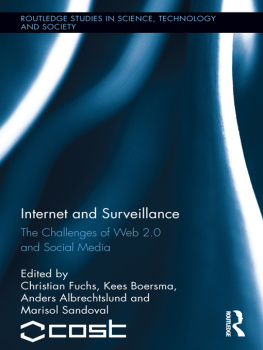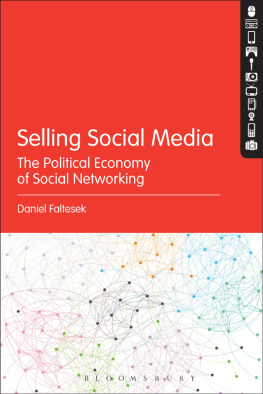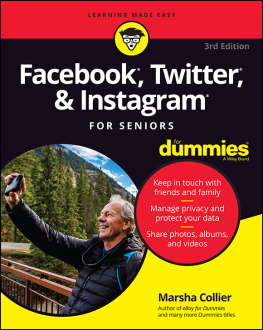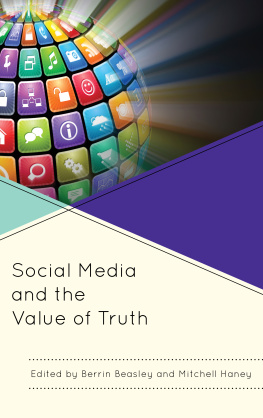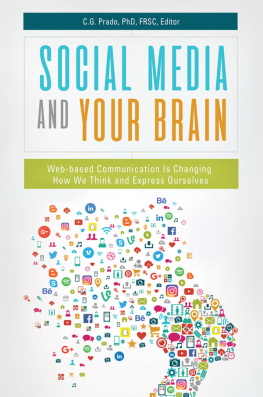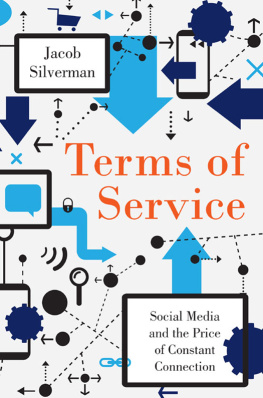Social Media
Social media platforms have captured the attention and imagination of many millions of people, enabling their users to develop and display their creativity, to empathize with others, and to find connection, communication and communion. But they are also surveillance systems through which those users become complicit in their own commercial exploita-tion. In this accessible book, Graham Meikle explores the tensions between these two aspects of social media.
From Facebook and Twitter to Reddit and YouTube, Meikle examines social media as industries and as central sites for understanding the cultural politics of everyday life. Building on the new forms of communication and citizenship brought about by these platforms, he analyses the meanings of sharing and privacy, internet memes, remix cultures and citizen journalism. Throughout, Social Media engages with questions of visibility, performance, platforms and users, and demonstrates how networked digital media are adopted and adapted in an environment built around the convergence of personal and public communication.
Graham Meikle is Professor of Communication and Digital Media at the University of Westminster, UK.
Social Media
Communication, Sharing and Visibility
Graham Meikle
First published 2016
by Routledge
711 Third Avenue, New York, NY 10017
and by Routledge
2 Park Square, Milton Park, Abingdon, Oxon OX14 4RN
Routledge is an imprint of the Taylor & Francis Group, an informa business
2016 Graham Meikle
The right of Graham Meikle to be identified as author of this work has been asserted by him in accordance with sections 77 and 78 of the Copyright, Designs and Patents Act 1988.
All rights reserved. No part of this book may be reprinted or reproduced or utilised in any form or by any electronic, mechanical, or other means, now known or hereafter invented, including photocopying and recording, or in any information storage or retrieval system, without permission in writing from the publishers.
Trademark notice: Product or corporate names may be trademarks or registered trademarks, and are used only for identification and explanation without intent to infringe.
British Library Cataloguing in Publication Data
A catalogue record for this book is available from the British Library
Library of Congress Cataloging in Publication Data
Meikle, Graham, 1965-Social media : communication, sharing and visibility / Graham Meikle. --1 Edition. pages cm Includes bibliographical references and index.
ISBN 978-0-415-71223-1 (hardback) -- ISBN 978-0-415-71224-8 (pbk.) -- ISBN 978-1-315-88417-2 (ebook) 1. Social media. 2. Online social networks. 3. Citizen journalism. 4. Social media--Moral and ethical aspects. I. Title.
HM742.M457 2016
302.231--dc23
2015030076
ISBN: 978-0-415-71223-1 (hbk)
ISBN: 978-0-415-71224-8 (pbk)
ISBN: 978-1-315-88417-2 (ebk)
One of the best bits of writing a book is being able to thank in public the people whove helped. Thanks to Erica Wetter, Simon Jacobs and everyone at Routledge. Thanks also, often for many things over some years, to Stuart Allan, Chris Atton, Steve Collins, Victoria Esteves, David Gauntlett, Matthew Hibberd and Marie OBrien. Special thanks, as ever, to Sherman Young, who took the time to read the whole manuscript and make some valuable suggestions. And thanks for everything else and more, to Fin, Rosie and Lola, with love.
Parts of have appeared in V. Esteves and G. Meikle (2015) LOOK @ THIS FUKKEN DOGE: Internet Memes and Remix Cultures in C. Atton (ed.) The Routledge Companion to Alternative and Community Media, London: Routledge.
Parts of have appeared in (2014) Citizen Journalism, Sharing, and the Ethics of Visibility in E. Thorsen and S. Allan (eds) Citizen Journalism: Global Perspectives, Volume 2, New York: Peter Lang.
Parts of have appeared in (2015) Distributed Citizenship in P. Weibel (ed.) Global Activism: Art and Conict in the 21st Century, Karlsruhe: ZKM | Center for Art and Media and Cambridge, MA: MIT Press; and in (2014) Social Media, Visibility and Activism: The Kony 2012 Campaign in M. Ratto and M. Boler (eds) DIY Citizenship: Critical Making and Social Media, Cambridge, MA: MIT Press.
In 2014, a well-known frozen-food company introduced a new product called Mashtags. These are frozen mashed-potato chunks, shaped like common images from our daily online lives email @ symbols, #hashtags and two different kinds of smiley :-) faces. So our daily diet can now include not just typing these social media icons, but also eating them, as they displace the alphabet-shaped potatoes that have themselves gone the way of the dinosaur-shaped potato. Mashtags are one index of just how quickly and deeply social media have taken root in our everyday lives. The social media repertoire of friending and following, of liking and tagging and commenting and sharing, has become second nature in a few short years.
The size and reach of the largest networks, many of which are still only a few years old, can still astonish, as can the speed with which they have embedded themselves in daily life. The early mythology of Facebook had become a major Hollywood film within six years of the firms creation, with The Social Network winning Oscars before the actual social network had yet gone public on the stock exchange. As I write this, Facebook is eleven years old and can claim one in every five people on earth as a regular user. YouTube is ten, and boasts that 300 hours of video are uploaded to its site every minute. Twitter hashtags now appear on screen throughout the TV news, and as prompts to viewer action in reality shows, current affairs debates, live sport broadcasts and even the weather forecast.
The contours of the contemporary social media environment were drawn in a short period in the middle of the first decade of the twenty-first century. The opening act was the purchase of MySpace in 2005 for US$580 million by Rupert Murdochs News Corporation. Murdochs takeover put social networks into the headlines, and signalled that they could be a mainstream proposition. In July 2006, Twitter launched. In September, Facebook dropped its membership restrictions and opened up to anyone over 13 who wanted to join. And in October, Google bought YouTube for US$1.65 billion, leading Time magazine to pronounce that you were the person of the year. In January 2007, Apple announced its first iPhone, going on to introduce its App Store the following year. In this short period we can see the convergence of established media companies, software services, user-generated content platforms, social networks and new communications devices built around ubiquitous connection. These emerging social media services helped drive demand for smartphones, and smartphones helped network effects to kick in for the successful social media services. Social media apps are consistently popular and help platforms to consolidate and expand their number of users and keep them using their service. The top five free iPhone apps listed in the UK App Store at the time of writing in July 2015 are WhatsApp, Messenger, Facebook, YouTube and Instagram of these five, only YouTube is not owned by Facebook.
Such rapid change, of course, brings fresh anxieties anxieties that we can see being worked out in popular culture. Social media have quickly come to animate the plots of dystopian novels, films and television programmes; these mirror the utopian fictions of the mission statements and press releases of the social media firms themselves, to which well return in . For example, anxiety about the authenticity of those with whom we may communicate in online networks has prompted the cautionary


